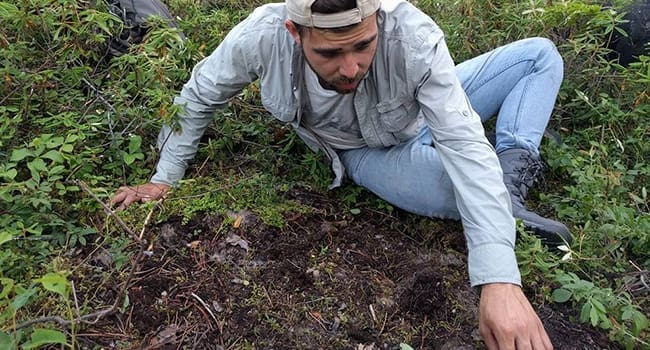Fungal communities that nourish pine tree roots are being altered by both human-made and natural disturbances, which can stress forests and make it tougher for pine seedlings to regenerate, said Jean Rodriguez Ramos, a PhD candidate in the Faculty of Agricultural, Life & Environmental Sciences and co-author of a pair of studies showing the results.
That’s a concern for forest sustainability, he said.
“The forestry industry is important to Alberta, so we should work to ensure plants of interest are able to establish under the increased stress imposed by climate change.”
The multi-year research showed that disturbances affect the top layer of soil, which causes various changes in the structure and abundance of fungal communities.
One of the studies, published in New Phytologist, showed that ectomycorrhizal fungi – a type that lodgepole pine trees rely on to survive – decline after disturbances like wildfire, clearcut logging and salvage logging. At the same time, other types of fungi can increase and potentially alter the forest’s nutrient cycle.
That’s particularly troubling as disturbances, fuelled more frequently by climate change, can overlap in the same forest areas, Rodriguez Ramos noted.
“Drought, wildfire and logging can overwhelm the environment with increased stress, and if it passes a certain threshold, it’s possible the forest ecosystem will never go back to how it was before; that resiliency is compromised.”
Pine seedlings growing in soils affected by clearcut and salvage logging were weaker and smaller than those grown in soils affected by natural disturbances, according to the second study, published in the Journal of Applied Ecology.
“The seedlings don’t adapt as well to man-made disturbances, possibly because of soil compaction due to harvesting,” he suggested.
The research findings can help guide best practices for how to choose forest soils for use in tree nurseries to create more resilient seedling regeneration, Rodriguez Ramos suggested.
“Given the importance of salvage logging as a management strategy, we should consider the impacts these practices have on soil fungal communities, as they mediate seedling performance. And, studying potential ways to restore these communities might be useful to ensure seedlings benefit from the fungal communities in the surrounding soil and those colonizing their roots.”
On a larger scale, findings like these point to the importance of using new solutions to sustain natural resources as climate change continues to make itself felt in the coming decades, he added.
The research was supported by the Natural Sciences and Engineering Research Council of Canada, the Alberta Conservation Association, CANFOR, Alberta Plywood Ltd., Mikro-Tek Inc., Weyerhaeuser Co. and Sundre Forest Products.
| By Bev Betkowski
This article was submitted by the University of Alberta’s online publication Folio, a Troy Media content provider partner.
The views, opinions and positions expressed by columnists and contributors are the author’s alone. They do not inherently or expressly reflect the views, opinions and/or positions of our publication.


